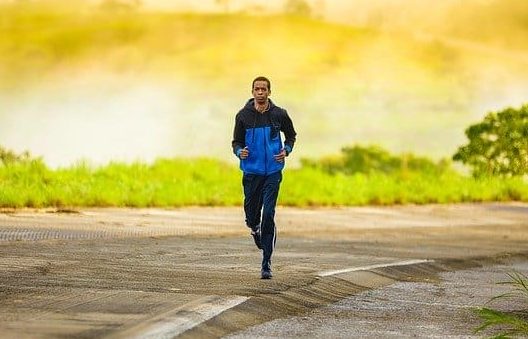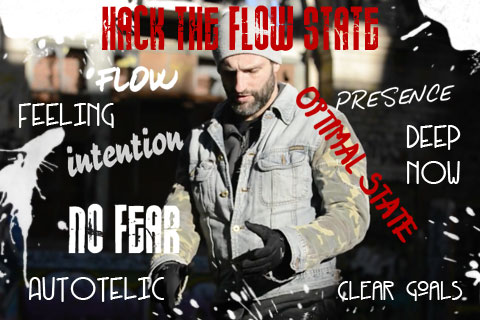
Runners will tell you themselves that running is one of the most accessible ways to quickly enter into flow state. This totally natural activity engages the entirety of the human physiology and activates many different systems within the body. Here we use the term “flow state” in the original context defined by the renowned and respected psychologist Mihaly Csikszentmihalyi. If you are unfamiliar with this work you can get a start on it by reading this article which is also on this site, which will make the protocols I adopt in this particular article make a lot more sense.
Flow state in the definition that we are using is composed of three components, they are:
- Challenge/Skills balance
- Having clear goals
- Unambiguous self-feedback
Let’s see how these components fit into the achievement of flow state while running.

Challenge/Skills balance in running
While running is accessible to almost everyone who has two working legs, there is also an entire spectrum of skill level from basic, primal, instinctual running all the way up to elite world championship level. There are also different “types” of running to consider, such as a short distance sprint, a middle distance, in between middle and long-distance, long-distance and finally ultra-long distance. Each discipline has its own peculiarities and are actually quite different from one another. Let’s focus here on middle to long-distance running in our analysis of flow state. So imagine a recreational runner who might occasionally run a marathon for example.
Most people have known how to run since they were toddlers and so have a base skill level for the activity of running. More advanced runners incorporate certain breathing techniques, pacing, foot placement per stride, arm swing as well as techniques for running up and down an incline, at differing altitudes, temperatures and climates.
Now we see that the skill levels in running can be quite complex and reach high levels. More so when we consider that these skills and techniques have to be synchronized harmoniously all at once to reach optimal performance.
If you are a beginner, you have no choice but to focus on the basics. Probably start by building up some basic fitness. First, run around the block. 5 minutes. This is realistically not enough time to enter into a steady flow state. The “challenge” in this case would be to extend the length of time that you can maintain a running gait.
After you can sustain a steady pace for around 30 minutes, you have built some skill. You can now add some challenge to your routine. Perhaps try to beat your previous time around the route which you ran. You might add weight to your body with wrist or ankle weights or perhaps run over more hills.
The key with regards to achieving flow state is to add a challenge that is neither too easy nor too difficult to achieve, i.e. you should notice that you are being challenged, but not find it too overwhelming or even impossible to get through it. The point is to really engage the mind in the activity. There should be no room for distracting thoughts as all focus is on this run. This applies to every level of runner from beginner to advanced.
A more advanced runner might increase the challenge to match his or her skill level by doing things like:
- Doing drills to increase VO2 max.
- Training at altitude.
- Adjusting gait and stride.
- Work on breathing techniques.
The challenge/skills balance is really the cornerstone of flow state induction while running and so special attention should be given to this area.
Having clear goals in running

Clear goals and objectives are a very useful component to bring about flow state in running. The goals you have can be long-term or short-term. “I want to complete a marathon next summer” could be an example of a long-term running goal. “I’m going to take 20 seconds off my regular training route” might be a short-term goal.
Visualization is a very useful mental tool in this space. The idea is to simply imagine, in as great detail as possible, yourself already reaching your goal. For example, if your goal is to complete a full marathon, you might want to close your eyes and “see” the whole scenario. The crowd gathered around the finish line, maybe it’s a sunny day in London. The smell of the city, the cheering sounds, the applause as you carry yourself over the line. Include as many senses as possible. It’s called “visualization” but you have 5 senses. How do your legs and body feel after the marathon? Can you already feel the joy, elation and satisfaction of achieving your goal?
The point is to be clear about the goal as a way to focus and motivate the mind into purpose. You might have the idea that you are “running towards your goals”.
Unambiguous self-feedback
In other words, being honest with yourself about your progress (or lack thereof) and how your expectations are matching up to your actual performance. So for example, if you had expected to finish a certain run in 30 minutes, but you actually did it in 33 minutes, then you would have a data point to work with for the next session. You would then begin your next run with added purpose. This is just another concrete means to focus the mind on the task at hand.
Focusing on the task at hand is a gateway to entering the flow state.
Honest self-feedback has the effect of feeding into the progression of reaching goals. You will have perspective about what level you are performing at so you will be better able to progress. When you know what your abilities, as well as limitations, are, then you will be able to calibrate your activity to the optimal level that allows flow state to kick in.
This self-feedback is also quite vital to use in “real-time” while you are actually on a run. You should be able to feel whether you are able to push harder, perhaps pushing too hard through discomfort. In the latter case, you may want to slow down a bit to avoid injury, exhaustion or worse. If you can cruise in between “too easy” and “too difficult”, then you are in the zone that can effect flow state.

Conclusion
Running and getting into flow state are almost synonymous with one another. If you are particularly a long-distance runner, it’s difficult actually not to slip into flow state as you cruise, mile after mile, breathing steadily, rhythmically, you know where you’re going and what you are trying to achieve. Reading through this article hopefully will give runners more awareness and control over their flow state as part of their journey into physical movement.